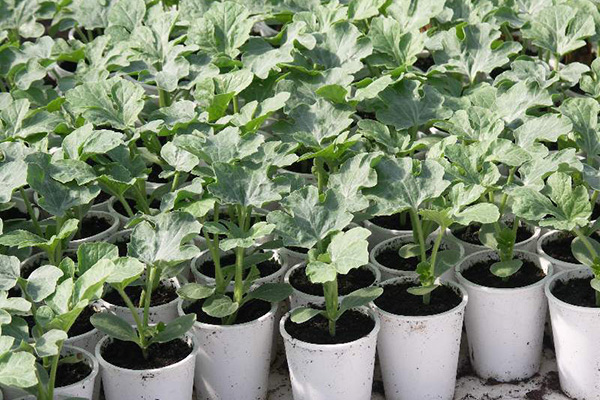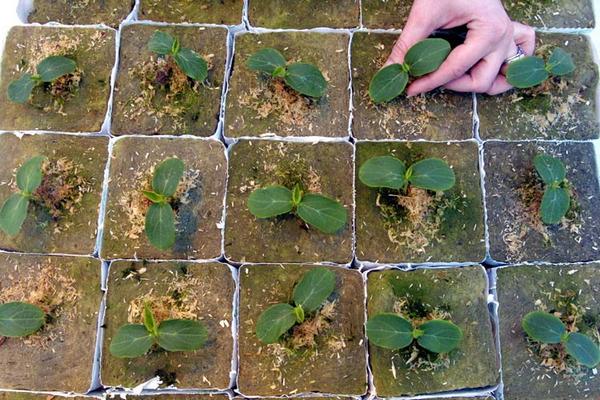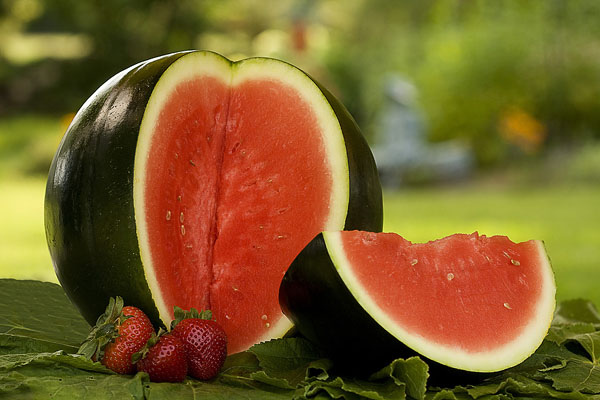Planting and caring for watermelon outdoors
Content
Greenhouse preparation
For growing watermelons, a greenhouse covered with any material (glass or polycarbonate) with a height of 1.6 to 2 meters is suitable. Since they must curl onto special devices, the lower height will prevent the lashes from developing and the fruit to ripen.
Greenhouse preparation should begin in mid-March. This is the time when you need to remove snow from it, check the entire structure, fix faults, patch up cracks and ventilate well. Before settling watermelons in a greenhouse, it is useful to sow radishes there, watermelons grow well on the ground where cruciferous plants used to be. After harvesting, it's time to plant watermelon seedlings in the ground.
Watermelons grow well on sandy loam soil, so they will love this mixture:
- garden land - 3 parts;
- humus - 3 parts;
- sand - 4-5 parts.
It is quite nutritious for the beginning of growth, then the watermelons will have to be fed with fertilizers.
Growing seedlings
Greenhouses usually cultivate varieties "Ogonyok" (fruits no more than 2 kg, ripen in 70-85 days), "Pannonia" (ripens in 70-75 days), hybrid "Krisby F1" (the fruit can grow up to 6 kg, ripens in 60-65 days). The early variety "Suga baby" is very popular. It ripens in 75-85 days, the fruits, justifying the name, delight with sweet red granular pulp and grow up to 3-5 kg.
Experts advise not to get carried away with varieties with large fruits, small berries are better suited for greenhouses, they have better ovaries, and they are also easier to grow on trellises.
First, watermelon seeds are advised to warm up in the sun, and just before sowing, they are poured first with a weak solution of potassium permanganate, and then with warm (25 degrees) water.
Seeds are planted from the end of April. The seedlings will be ready for planting in 25-35 days. It is best to place the seeds in peat cups (together with which they are then planted) with a diameter of 10 cm or separate plastic containers, when planting in the ground, the root system should not be damaged. Fertilizers must be added to the soil mixture. It can be fertilizers with phosphorus, nitrogen and potassium, or you can add wood ash and potassium sulfate.
Some summer residents, when soaking seeds, use a growth stimulator or liquid diluted fertilizers for better germination. Others say that good seeds germinate well even without chemistry.
The seed should be deepened by no more than 3 cm and placed on a barrel to facilitate the leaf's exit from the shell. The optimum temperature before germination is 22-25 degrees, and for growing seedlings is slightly lower - 21-23.
Even before planting in the greenhouse, the seedlings need to be fed, this is done 2 weeks after sowing with diluted mineral fertilizer. Previously, this should not be done, because weak roots may not withstand contact with fertilizer. Young seedlings should receive full lighting for 10-12 hours, fluorescent lamps are suitable for this. If there is not enough light, the plants can stretch too much and weaken.
Disembarkation
Planting seedlings on greenhouse beds should take place at an established temperature of 20-25 degrees in mid-May. If the weather does not want to provide such weather, you will have to arrange heating of the plants. The soil is prepared as follows: the top layer of the soil is removed, the resulting trench is filled with humus and hay, all this is plentifully spilled with hot water, and the removed earth is laid on top.
Seedlings are planted directly in peat cups according to the scheme 70 cm by 50 cm (70 - between rows, and 50 - between plants), if it germinated in plastic cups, they are carefully cut so as not to damage the delicate root system. You can plant 2 sprouts in one hole, but carefully monitor and direct the lashes in different directions. Watermelons do not like crowds and crush, they will not bear fruit if the lashes are intertwined and interfere with each other. The sub-cotyledon knee must rise a couple of centimeters above the ground, otherwise it can rot.
The temperature should be no higher than 30 degrees, so on a hot day you will have to arrange ventilation.It must be remembered that the lifespan of a male flower is not long, if the greenhouse is closed and bees pass it, you need to artificially pollinate the plants. When the fruits grow to the size of an apple, the whips without ovaries are removed. On one plant there should be no more than 6-7 berries, after the last one you need to count 5 leaves and cut off the growth point.
Watermelon does not like a lot of moisture, so you need to be careful with watering, check the soil and water only after it dries. A separate question, which gardeners answer in different ways, concerns fertilizers. To grow a good watermelon to ripeness, it needs to be fed. Usually, feeding is done 3 times: when the lashes have grown stronger and have grown to 30 cm, before flowering, when the ovaries have formed. It is no longer possible if we want to eat useful substances, not fertilizers.
But what to feed? Complex fertilizers, ammonium nitrate, superphosphates, ammonium sulfate, potassium salts are recommended by specialists. Supporters of naturalness prefer chicken manure (1 liter of manure is taken for 10 liters of water) and wood ash. No matter how you decide, no matter what you choose, you still need to fertilize. This should be done carefully, watering the plant at a distance of 20 cm from the stem for the first time and 40 cm thereafter. Moisture, even water, should not get on the stems and leaves at all, and always watered with warm water.
Outdoor cultivation
If you have a sandy loamy neutral alkaline soil in your country house and there is an open place warmed by the sun, then with proper care, early ripening varieties can mature without a greenhouse. In the southern regions of the country, in May-June, you can sow seeds directly into the ground to a depth of about 8 cm. 5-6 seeds are sown on one meter of the plot, since they will not all sprout, it should not be too crowded. After sowing the seeds, they are watered with warm water. A week later, shoots should appear, and after the appearance of the fifth leaf, they are spudded.
In the middle lane, seedlings of early ripening varieties are planted on the site. Moreover, before planting on the site, it is tempered - the temperature in the room (if possible) is lowered to 16-17 degrees during the day, and to 13-14 at night. If the temperature is not regulated, then you can simply take it outside.
Planted in holes at least 14 cm in size at a distance of 70 cm from each other and 1 m between the rows. The planting should be such that the root collar remains 1-2 cm above the ground.
The "Suga baby" variety ripens well in the open field, but it is better to grow it not from seeds, but by seedlings. Proper care of a watermelon in a garden bed consists in rare abundant watering, obligatory loosening of the soil after watering or rain, and top dressing. It is advisable to straighten the lashes so that they do not interfere with each other, to tear off the growth point after 6-7 ovaries. You need to fertilize plants at the same frequency and in the same way as in a greenhouse. If the greenhouse fruits are tied up, and they are singing in the air, then in the garden the watermelon lies on the ground - you need to make sure that it does not rot, and even so that the sun warms it from all sides.
Watermelons suffer from pests and diseases. Wireworms, ants, melon aphids, sprout flies, scoops - everyone wants to profit from a watermelon. And there are also diseases: powdery mildew, broomrape. From these misfortunes, plants are treated with chemicals (malofos, phosphamide). Careful inspection and wood ash with laundry soap often help to avoid troubles.
If you want to grow a seedless watermelon, you will have to do it only in a greenhouse way. Cultivars "Queen of Hearts", "King of Hearts", "Jack of Hearts" mature in about 85 days, they love well-drained sandy-clay soils and a lot of sun. Their seeds germinate at temperatures not lower than 25 degrees.
Some hobby gardeners grow vegetables in barrels. Similarly, a watermelon can be grown in an iron barrel. If you put fertilizer in a barrel and arrange a good drainage layer, and drill the bottom in several places, then you can try to settle a watermelon there. Since the soil in the iron barrel warms up well, he might like it. You just need to remember that the soil dries faster in the barrel, that it is not advisable to water the greens of the watermelon, and the fruits will have to be tied up, as in a greenhouse.
Video "Melon and Watermelon Care"
Video lecture for gardeners, which tells about the cultivation of melons and watermelons. After watching the entry, you will learn how to plant seeds correctly, when to plant in the ground and how to fertilize.
